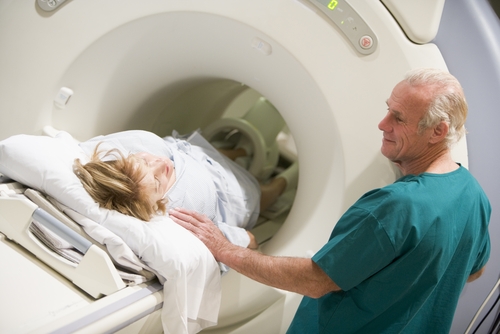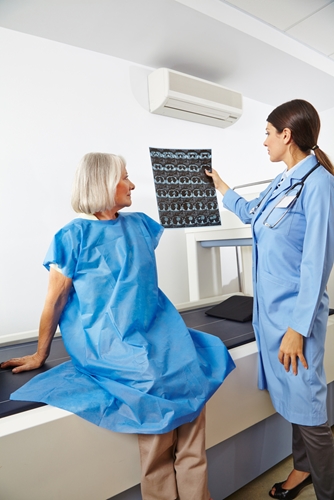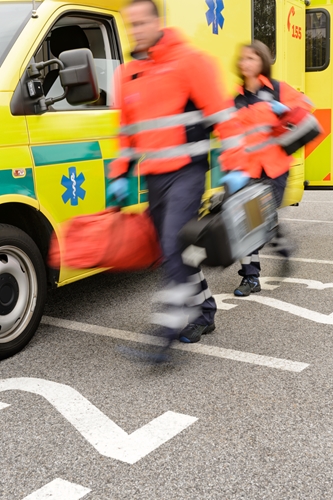According to a medical-imaging study conducted by researchers at the Massachusetts General Hospital Institute for Technology Assessment, computerized tomography may have the potential to change how emergency physicians evaluate and treat patients.
During the 15 month study researchers followed 245 emergency room physicians in four separate medical centers across the country. Doctors treating individuals suffering from chest pain or tightness, headaches, shortness of breath or stomach ailments were asked to complete surveys just after making their initial diagnoses. They would then administer CT scans and fill out a post-screen questionnaire. Doctors completed surveys for approximately 1,280 patients.
Researchers found that after the CT scan, physicians changed their diagnoses for 51 percent of individuals with stomach issues, 42 percent of individuals with chest pain and shortness of breath and 24 percent of individuals suffering from headaches. Additionally, CT scans helped affirm or dismiss diagnoses 95 to 97 percent of the time in all symptom-based study groups. The screenings also changed admission decisions in 19 to 25 percent of emergency room cases. The results were published in the journal Radiology.
"Emergency department physicians who face increasing pressure to make clinical decisions quickly are sometimes criticized for ordering too many CT scans that may not be clinically justified," Dr. Pari Pandharipande, the study's organizer, said. "We found that – for patients with abdominal pain, chest pain or shortness of breath, or with headache – physicians' leading diagnoses and management decisions frequently changed after CT and that diagnostic uncertainty felt by physicians was alleviated."
Rise Of The ER CT
According to an earlier study published in Radiology, rates of CT use in emergency situations have drastically increased since 1995. Dr. David Larson, director of Cincinnati Children's Hospital Medical Center and the study's lead author, told National Public Radio this rise could be attributed to the broadening availability of screening equipment and physicians' increasing desire to confirm diagnoses with hard imaging evidence. Around 12 million Americans seeking care in ERs and health clinics are misdiagnosed each year, reported NBC News.
Another key driver behind this trend is the pressurized environment of the ER and its effect on physicians.
"They [doctors] are driven by the huge number of people who come to the emergency room," Dr. Stephen Amis, the chair of radiology at Albert Einstein College of Medicine and Montefiore Medical Center, said in an interview with Radiology Today Magazine. "They have to quickly evaluate the person and get him out the door or admitted to the hospital. The CT scan takes about 15 seconds. These physicians are under the pressure of the Emergency Medical Treatment and Labor Act passed in 1986, which basically says that if a patient comes to an emergency room, it's incumbent the physician finds nothing is wrong. If a serious disease or condition shows up afterwards, the physician can be fined big time."
Studies Question Emergency Scans
Opponents of extensive ER screening warn that this trend could adversely affect patients. A study published in The New England Journal of Medicine claimed that patients could have as high as a 1-in-80 chance of developing cancer as a result of CT scanning.
Dr. Keith Kocher, a researcher at the University of Michigan and chronicler of the CT scan trend, believes these concerns regarding radiation exposure are legitimate.
"We are probably causing some degree of future cancers in our patients as the result of the scans we are doing today," he told Reuters. "That's especially a concern for kids and for people who need multiple scans."
The Federal Food and Drug Administration estimated that one in 2000 individuals who undergo CT scanning develop cancer. The natural incident rate for Americans is 1-to-5.
Last year, the American Board of Medical Specialties, the American College of Radiation and the American Medical Association compiled a joint report that addressed increasing rates of screening-related radiation exposure. According to data cited in the report, it increased by 600 percent between 1980 and 2006. The organizations offered a host of suggestions to combat this trend. They encouraged hospitals to collect data for each instance of scanning and decrease pediatric screening. Additionally, they suggested that the radiology community develop uniform scanning guidelines.
Others have argued that CT scans don't actually benefit patients in emergency medical settings. Dr. Ami Schattner, a doctor from Kaplan Medical Center in Israel, led a study that found tests like CT scans are simply superfluous, reported Reuters. During his research, Schattner followed 442 ER patients over a two-month span. He found that emergency physicians made the right diagnosis using only patient histories and data gained via general physical exams 80 to 85 percent of the time.
"As much as we want to rely on the technology, it's not the technology that helps us make a diagnosis," Schattner said in an interview with the news organization.
Doctors Promote Emergency CTs
According to Time Magazine, doctors continue to recommend CT scans not only because they provide a clear picture of patient health, but also because they cut down costs. Unneeded hospital admissions cost patients and health care providers around $140 billion in 2012, reported Statista. By giving physicians the ability to accurately identify a patient's condition, the CT lessens hospitalizations, as doctors admit fewer people out of uncertainty.
According to a study sponsored by the National Heart, Lung and Blood Institute, CT scans reduce emergency hospitalizations connected to chest pains, reported the Los Angeles Times. And, in 2007, the American Academy of Neurology recommended that seizure victims undergo emergency CT scans, as they were found to have altered treatment plans for 17 percent of patients.
An article published in the Western Journal of Emergency Medicine argued that, ultimately, the benefits outweigh the risks.
"CT is a tremendous advance in managing a wide array of medical and surgical diseases and, despite its high radiation dose, should be used in many ED patients with potentially serious disorders," author Dr. David Schwartz wrote.
Amis agreed, but cautioned physicians to do as much as possible to mitigate the risks associated with emergency CT scanning.
"Radiology and imaging have revolutionized medicine," Amis told Radiology Today Magazine. "CT scans can be a wonderful test but only when really indicated. Every doctor should think about the risk-benefit ratio for the patient."
Ronny Bachrach
Latest posts by Ronny Bachrach (see all)
- Konica Minolta Debuts First-of-Its-Kind Digital U-Arm System at AHRA - July 27, 2016
- Researchers Detect Signs Of Stroke Risk Using MRI - June 27, 2016
- Imaging Biz: Q&A with David S. Channin MD: How to Make PACS Patient Centered - June 22, 2016










